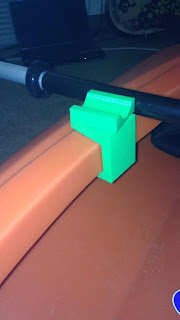We need more native grasses in Ohio. It's that simple.
Virtually everything that lives here depends on and needs those plants at some point during the year. During my commute, one of the very obvious things I've noticed is what appears to me be unnecessary mowing - a big why? Why do we mow so much land along our roadways? If nothing else, go ahead and mow from the road to the ditch, but from the ditch to the fence establish warm-season grasses. Nobody walks or plays ball there, or will they ever. And all kinds of wildlife would benefit from the better habitat.
I couldn't come up with a valid objection in my head, so I looked for more informed opinions. I wrote a letter to the ODNR asking if they had a program working with ODOT to somehow minimize mowing and allow for warm-season grasses to grow. I received a very cordial return phone call from John Kaiser at the ODNR Division 5 office. He let me in on some of his
current roadside grass project, which were very close to what I had been thinking. And he let me know what I could do personally: write a letter to ODOT. Letters can be persuasive and get attention. So that's what I'm doing and encouraging others to do.
Here is my letter to ODOT.
- - - - - - - - - - - - - - - - - - - - - - - - - - - - - - - -- -
Shawn Anverse
Ohio Department of Transportation
Transportation Administrator
1630 W. First Street
Springfield, OH 45504
Dear Mr. Anverse,
I would like to propose that we find a solution other than attempting to mow everything on the roadsides and make space for native grasses and forbs. Native plants benefit all kinds of wildlife in addition to reducing costs in the long run. I know that Indiana and Minnesota have plans involving roadsides and grasses. I'd like to think that Ohio is leading the way on this area but it doesn't seem to be the case.
I'm aware that there is a pilot program in Darke county, but believe that we should move swiftly to enact some sort of program statewide. I propose that we begin by continuing to mow from the road to the ditch but return the area from the ditch to the fence to native plants.
This would create vast natural corridors for wildlife and plants and enable the mowing to attend to mowed sections more often and improve their appearance.
I am willing to help, discuss, communicate, whatever it takes to make this happen. Please let me know how I can be of assistance.
Sincerely,
Devin B. Meister







